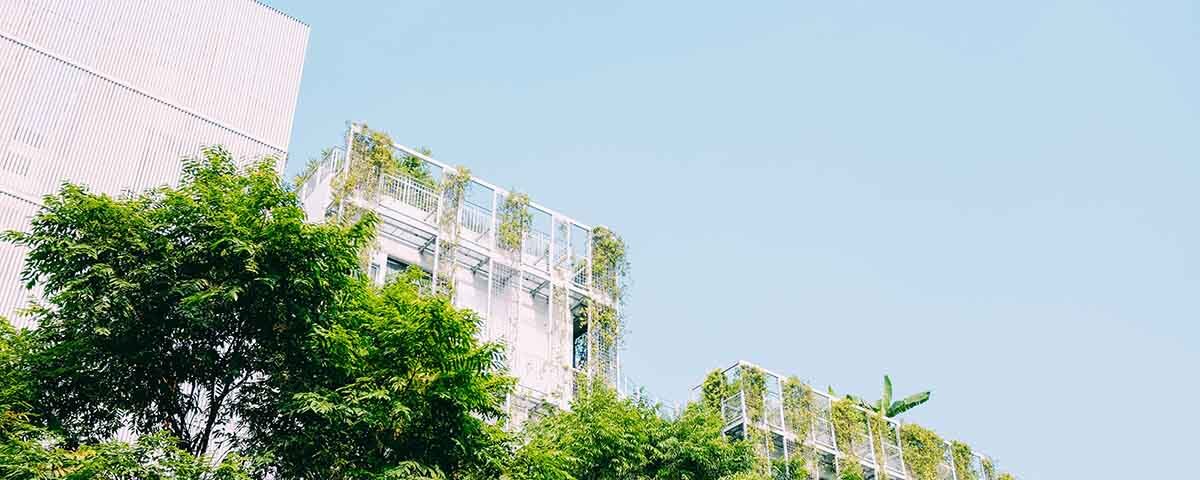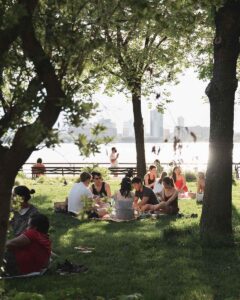
Here’s an idea: step away from the screen where you’re reading this for a moment and look out a window. Do you see at least three trees from where you are? If so, congratulations. You’ve already passed the first test to meet the 3-30-300 rule. This rule says that we should all see at least three trees from our homes (or workplaces), have at least 30% vegetation cover in our neighborhoods, and live within 300 meters of a good park or green space.
Being surrounded by nature has a highly positive impact on our health, both physical and mental. It invites us to enjoy the outdoors and do more sports, it lowers stress and anxiety levels, it promotes socialization, and it reduces the chances of suffering from various diseases, among many other advantages.
If you aren’t lucky enough to see three trees from your window, don’t worry: that may change. More and more cities are taking the impact of nature on our health (and that of the planet) into account and working to transform pavement into green space and ensure that inhabitants live healthier, happier, and more satisfied lives.
The health benefits of urban nature
In 2022, pediatricians and researchers made an appeal that got a lot of attention for its simplicity: they asked health professionals to prescribe children and adults more time in nature. These are some of the positive impacts that contact with nature has on the health of people both young and old:
Improving mental health and satisfaction levels

Artists painting in a park in Paris, France. Daphné Be Frenchie (Unsplash)
Living near green spaces and spending quality time in them reduces stress, anxiety, aggressive behaviors, hyperactivity, and the risk of depression. It also helps improve attention, sleep quality, and performance in school. All this affects mental health and helps people live happier.
Reducing pollution-related diseases
Nowadays, the presence of pollutants is one of the main causes behind the appearance and aggravation of diseases for city dwellers. Trees and vegetation act as great pollutant and particle filters, so they improve the air quality and make cities healthier places to live.
Encouraging physical activity

Children playing. Robert Collins (Unsplash)
Living near green spaces like parks encourages spending more time outside, which in turn increases physical activity levels, improves motor development, and decreases the risks of cardiovascular diseases. In addition, spending more time outdoors increases sociability, which has a direct impact on the well-being of individuals and communities.
Improving health during pregnancy and the first years of life
All the benefits of enjoying green spaces have a significant impact during pregnancy and the first years of children’s life. They are associated with a longer duration of gestation, which reduces the risk of premature birth and infant mortality, as well as with important benefits in little ones’ development.
Reducing mortality caused by high temperatures

Groups of friends sitting in the shade of trees. Mason Dahl (Unsplash)
Green spaces help lower the temperatures in cities and prevent the urban heat island effect. That’s the effect produced when cities trap heat in their streets and buildings. According to a study carried out by the Barcelona Institute for Global Health (ISGlobal), a third of the deaths attributable to heat islands in European cities could be prevented if trees covered 30% of urban space.
Reducing noise levels
The presence of trees and vegetation can also reduce noise pollution. A study conducted by researchers from Singapore concluded that, if the presence of greenery in cities is properly designed, traffic noise can be reduced up to 50%. This has a direct relationship with physical and emotional well-being.
Improving quality of life and reducing mortality
As a consequence of all the above benefits (and many more), the presence of green spaces in cities contributes to improving health in general, having a fuller life, and reducing mortality.
A garden of your own
 Prudence Earl (Unsplash)
Prudence Earl (Unsplash)
At this point, you may be wondering what you can do to increase the presence of greenery in your own environment and reap their benefits. The truth is, there are very simple solutions. These include having plants inside and outside of your home, supporting urban gardens, and participating in initiatives that aim to increase green spaces in your area.
This last point is of particular importance. In recent years, citizen demands have contributed to different cities around the world increasing the presence of greenery in their streets.
The most recent one that has taken a significant step in this regard is Paris: the French capital’s new urban plan involves creating 300 new hectares of green areas and filling squares, streets, rooftops, and even the facades of buildings with vegetation. This will undoubtedly have positive effects on individuals, who will see more and more trees from their windows.
Main image: Adrien Olichon (Unsplash)




There are no comments yet